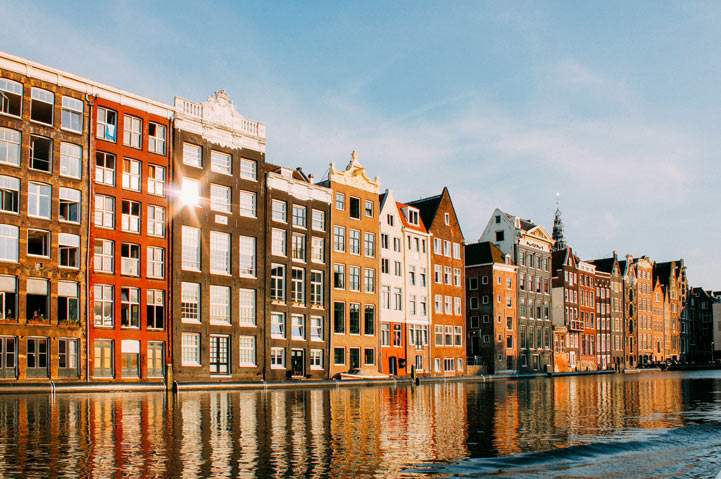Average European office occupancy rates reach the 60% mark, led by Madrid, London West End and Prague
Office occupancy rates continue to rise
How have we measured occupancy rates?
Savills Research has analysed office occupancy rates, based on the average number of attendees as a percentage of the office’s maximum capacity, over the course of a working week for a sample of fully let, multi-let office buildings located in the central business district (CBD) of selected European cities. The data is based on Building Management Systems from Savills European Property Management network taken during September 2024, and attendance is based on one user’s access card per day.
What has happened to office occupancy rates?
Savills data indicates that the average European office occupancy rate has marginally risen from 59% to 60% over the past six months, compared to the pre-pandemic average of 70%.
Which countries are leading the way?
Madrid’s office occupancy rates continue to outperform other European markets, at 66%, supported by a higher proportion of city centre living, shorter commutes and a strong in-office culture on peak days.
Prague reported an increase above 60% for the first time, as more companies have opted to introduce a stricter hybrid system. Dublin has also reported a gradual revival in occupancy rates, supported by rising tech occupier demand and many tech companies seeking to resume hiring.
London’s occupancy rates observed modest increases to 63% for the West End and 57% for the City. Private equity employees remain in five days a week, with most companies targeting their employees attending four days per week. Tech companies have been more lenient but are increasing pressure on employees to attend more days, which we expect will continue as hiring sentiment weakens. More generally across Europe, we are seeing more instances of companies actively introduce return-to-office mandates. Amazon has announced employees should attend the office five days a week from the start of 2025. Dell has also increased its office attendance requirements and Ubisoft has announced a three-day-a-week attendance policy.
In Paris, some employers temporarily advised workers to work from home due to high levels of tourism from the Olympics and Paralympics. However, more generally, French companies are pushing back on remote working as employee attendance increases and we expect this to rise during our next iteration.
On the whole, European office occupancy rates remain higher than the US cities, where office occupancy remains between the 30–40% mark, given a higher proportion of city centre living, shorter average commutes, better quality public transport, and a stronger in-office work culture.
How does occupancy change throughout the course of the week?
For landlords, most focus should be around weekly peak occupancy rates, as the drop in office occupancy rates is largely accounted for by a decline on Mondays and Fridays. Tuesdays (68%), Wednesdays (67%) and Thursdays (65%) are almost in line with the pre-pandemic levels, so offices are effectively as busy as they were before the pandemic during peak days.
Resilient office occupancy rates are supporting office demand – H1 2024 European office take-up rose by 6% YoY. Given that Oxford Economics forecasts an additional 1.5 million office-based jobs over the next five years across the EU, we believe office demand will continue to recover in CBD locations.

A two-tiered market is beginning to appear in Amsterdam in relation to hybrid working trends.
Corporates are struggling to attract workers back to the office, and are faced with underutilised floors throughout the week. These companies are spending more on amenities and have offered perks such as free lunches on Fridays to entice staff in. Employees justify longer commutes and homeworking and as such, we have seen occupier demand intensify for office space adjacent to train stations. There are even instances of companies who have closed their doors on Fridays given the home-working trend.
Mid-caps, or smaller companies, on the other hand, are thriving and seeking to upsize in many cases. They have reduced desk allocations from 70% to 50%, with more space for collaboration and private phone booths. These companies view the office as a long-term commitment and are spending more on their fitouts to inspire and engage employees. Occupiers are using better quality, well-located offices to attract and retain their staff, with over half of Dutch office leases signed in 2023 achieving EPC rating A or higher. With little to no available space in the South Axis, Amsterdam, prime rents have risen by 9% per annum for the past three years as occupiers compete for the best stock.
Employers need to create an environment that works for their employees. Workers expect more choice in the way they carry out their work and emphasis should be assigned on meaningful interactions. Companies that invest in their fitout, ensure amenity provision in and around the building and provide a variety of workspaces for their employees will reap the rewards.
